
This site uses cookies, by continuing to use this site you accept the terms of our privacy policy
Feed 2.0 Loading...
Dounreay Bulletin - Issue 26
25th May 2007
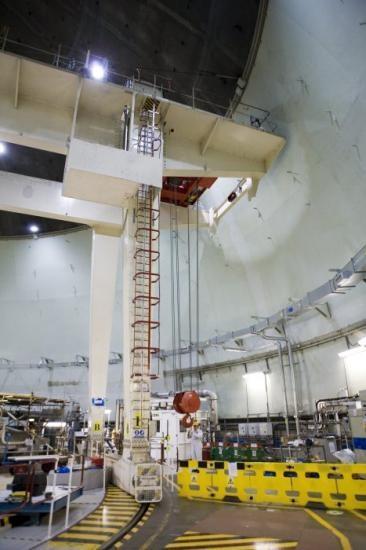
SPHERE'S POLAR CRANE READY TO DECOMMISSION REACTOR
Holding centre stage within the historic Dounreay sphere is the unique Goliath crane, one of the first polar cranes in the world. Installed fifty years ago in the Dounreay Fast Reactor (DFR), the original crane was in need of renovation in order to bring it up to the modern standards required to decommission and dismantle the reactor and ancillary plant inside the dome.
Due to the age of the equipment, the curvature of the sphere and the limited access routes, the project presented the DFR project team with many unique challenges. The crane has been safely and successfully upgraded by installing a new crab, replacing the existing two carbon steel crabs, a rewire of the electrical system, anti-collision system and the polar travel drive system. More: http://www.ukaea.org.uk/news/2007/15-05-07.html
STAFF TAKE PART IN EMERGENCY DRILL
All staff at Dounreay took part in the site's annual demonstration exercise witnessed by the Nuclear Installations Inspectorate on May 2. The mock site emergency was based on a fire in the liquid metal coolant being decommissioned at Dounreay Fast Reactor. The event was deemed a satisfactory demonstration of the site's emergency procedures, a condition of the site licence.
FINAL STRIP-OUT OF FUEL FABRICATION PLANT
The production plant that fabricated fuel elements for materials test reactors at home and abroad is undergoing a final strip-out before being declared ready to be knocked down. With the internal walls and ceilings removed, and all asbestos cleaned out, the active ventilation ducting can now be stripped out.
The building was constructed specifically for the manufacture of fuel elements for Dounreay and for the two research reactors at Harwell, PLUTO and DIDO. The design was sold to other countries and the site supplied fuel to a number of overseas operators. It ceased production of fuel elements in 2004 and began decommissioning immediately thereafter. The building is scheduled for demolition at the end of the summer, making it the 100th building to be demolished at Dounreay and the first category one facility in the country.
INNOVATION BY THE SHAFT ISOLATION PROJECT TEAM
Dounreay's shaft isolation project requires a large number of precision drilled holes, down which a grout solution is pumped as part of the hydraulic isolation of the shaft. It was quickly realised by contractor, Edmund Nuttall Ltd, that there was an opportunity under certain conditions for the drilling fluid and debris to leave the open end of the drilling at pressure, potentially posing a significant risk to the drill operators and others in the immediate area.
As there was no "off the shelf" solution to the problem, Edmund Nuttall Ltd set about designing a capping system that would protect operators and others from the possible effects of contact with the liquid and debris.
It is pro-active innovations such as this that are helping to create and maintain Dounreay's impressive safety record.
A photograph of the capping system can be found on UKAEA website:
http://www.ukaea.org.uk/sites/dounreay_intermediate_level_waste_shaft.htm
OFF-SHORE MONITORING FOR PARTICLES
Off-shore monitoring to improve understanding on the extent of particle contamination offshore will begin this week. This follows on from previous campaigns in 2005 and 2006. The intention is to survey a number of areas in order to further delineate the extent of the main particle plume. The work will be carried out by a remotely operated vehicle (ROV) which does not have the capacity to retrieve particles. Further work is ongoing to consider alternative technologies which can provide a retrieval function and trials will begin in late summer. For further information see:
http://www.ukaea.org.uk/sites/dounreay_particles_in_the_marine_environment.htm
STRATEGY PRODUCED FOR DEALING WITH RADIOLOGICAL INVENTORY
Dounreay's Tom Ross has been examining the long-term strategy for dealing with the high active liquor store's radiological inventory, stored on site in the Fuel Cycle Area.
The radiological inventory consists of a range of liquid raffinates and solvents arising from historical reprocessing activities on the site. It is a significant hazard, and the definitive strategy outlines what work will be required to render the inventory passively safe for long-term storage, and to clean-out and demolish the facility. The majority of the liquors currently stored in the plant will be cemented into 500L drums for long-term storage, and the solvents will be treated and then incinerated in a purpose-built facility.
"In arriving at the options, account was taken of the various decommissioning studies, strategy reviews and internal documents written, as well as seeking advice from the NDA on hazard identification," explained Tom. "The project will seek to minimise costs, be consistent with expectations of stakeholders and on a timescale which does not prejudice the required site interim end state date."
FINAL DRUMS OF HISTORICAL WASTE SUPERCOMPACTED
The last of Dounreay's historic backlog of drums of low level radioactive waste have now been supercompacted in the waste receipt, assay, characterisation and supercompaction (WRACS) facility.
Built to exacting standards, WRACS is an essential part of the decommissioning programme at Dounreay. Drums of low level waste are inspected and assayed, and then vertically squashed into "pucks" up to one fifth of their original size, using a 2000-tonne force. Secure bulk containers hold the "pucks" in storage facilities on site pending their ultimate disposal.
The 1100 drums of historic waste, which had been stored on site until WRACS became operational in July 2001, were processed in batches. The final 35 drums were repacked before compaction as the original drums had become corroded during storage.
IN THE DOCK OVER LEAD BRICKS
UKAEA has been charged with contravention of the Health and Safety at Work 1974. The charge alleges that UKAEA, in January 2006, failed to protect staff from lead bricks contaminated with radioactivity at Dounreay, resulting in an intake of plutonium by an employee. The case was called at Wick Sheriff Court on May 18 and continued without plea until next month.
DOUNREAY AT A GLANCE 2007
A simple introduction to decommissioning Dounreay has been published by the site. The four-page leaflet, Dounreay At A Glance 2007, can be viewed at:
http://www.ukaea.org.uk/downloads/dounreay/PR_At_a_Glance_v1_lo.pdf
DOUNREAY SHOWCASES NUCLEAR DECOMMISSIONING TRADE SHOW
The UK's premier trade event for suppliers to the nuclear decommissioning industry took place at Dounreay on May 17. Nearly 50 companies took part in Technology 2007, a showcase for the supply of engineering equipment and associated services and is aimed at specialists in design, maintenance, operations, decommissioning, waste management, process control and procurement. See: http://www.ukaea.org.uk/news/2007/17-05-07.html
Related Businesses
Related Articles
10/1/2025
Fusion-grade Steel Produced At Scale In UK-first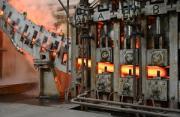
Researchers achieve 10x production cost savings for reduced activation steel. A United Kingdom Atomic Energy Authority (UKAEA) working group has successfully demonstrated the industrial scale production of fusion-grade steel.
22/12/2024
UKAEA To Lead The Creation Of A Robotics And AI Cluster
UKAEA will lead the creation of a new £4.9m nuclear robotics and artificial intelligence cluster across Cumbria and Oxfordshire. The robotics and AI cluster was announced by UK Research and Innovation (UKRI) as one of seven new projects to kickstart economic growth and address regional needs: www.ukri.org The robotics and AI cluster will link Cumbria and Oxfordshire to accelerate the decommissioning of the UK's legacy nuclear fission facilities and keep people out of hazardous environments.
5/12/2024
Diamonds Are Forever? World-first Carbon-14 Diamond Battery Made In Uk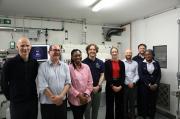
The world's first carbon-14 diamond has been produced with the potential to provide power for thousands of years. Scientists and engineers from the UK Atomic Energy Authority (UKAEA) and the University of Bristol have successfully created the world's first carbon-14 diamond battery.
4/11/2024
UKAEA Monthly Newsletter Latest Edition
Find out what has been happening at UKAEA in our monthly newsletter. Read about our recent activities and upcoming events.
1/10/2024
UKAEA Newsletter - Edition 11 Published Today
Find out what has been happening at UKAEA in our monthly newsletter. Read about our recent activities and upcoming events.
23/5/2024
Corwm Visits Dounreay Nuclear Site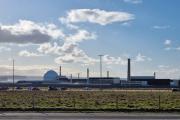
Members were given an overview of the scale of the problem and challenges faced in the decommissioning of the site. In the last week of March 2024, several members of CoRWM led by the Chair, Sir Nigel Thrift, made the long journey up to the North of Scotland to visit the Dounreay nuclear site, now managed by Nuclear Restoration Services.
5/3/2021
Design Contract Awarded For Dounreay Shaft And Silo Work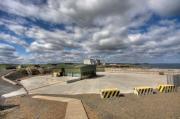
Dounreay has awarded an important waste clean-up contract to Jacobs as the site plans for the future of its deepest historic radioactive waste store. Jacobs and its supporting partners have been awarded a 6-year contract to provide a design management team to produce a fully integrated design for the shaft and silo project.
6/11/2013
Radiation dose to public from Dounreay reduces
Dounreay�s radioactive impact on the environment continues to fall, according to a report. The annual survey report �Radioactivity in Food and the Environment� (RIFE 2012) has recently been published and it can be read here - http://www.sepa.org.uk/radioactive_substances/publications/rife_reports.aspx The report uses data obtained from samples of air, fresh water, grass, soil, and locally sourced meat, fish, milk and vegetables during 2012.
6/4/2012
57,000 Tonnes Of Hazardous Materials Finally Dealt With At Dounreay
Dounreay today completed the destruction of one of the most hazardous legacies of Britain's earliest atomic research. A purpose-built chemical plant processed the last of 57,000 litres of liquid metal lifted from the primary cooling circuit of the experimental fast breeder reactor.24/3/2011



